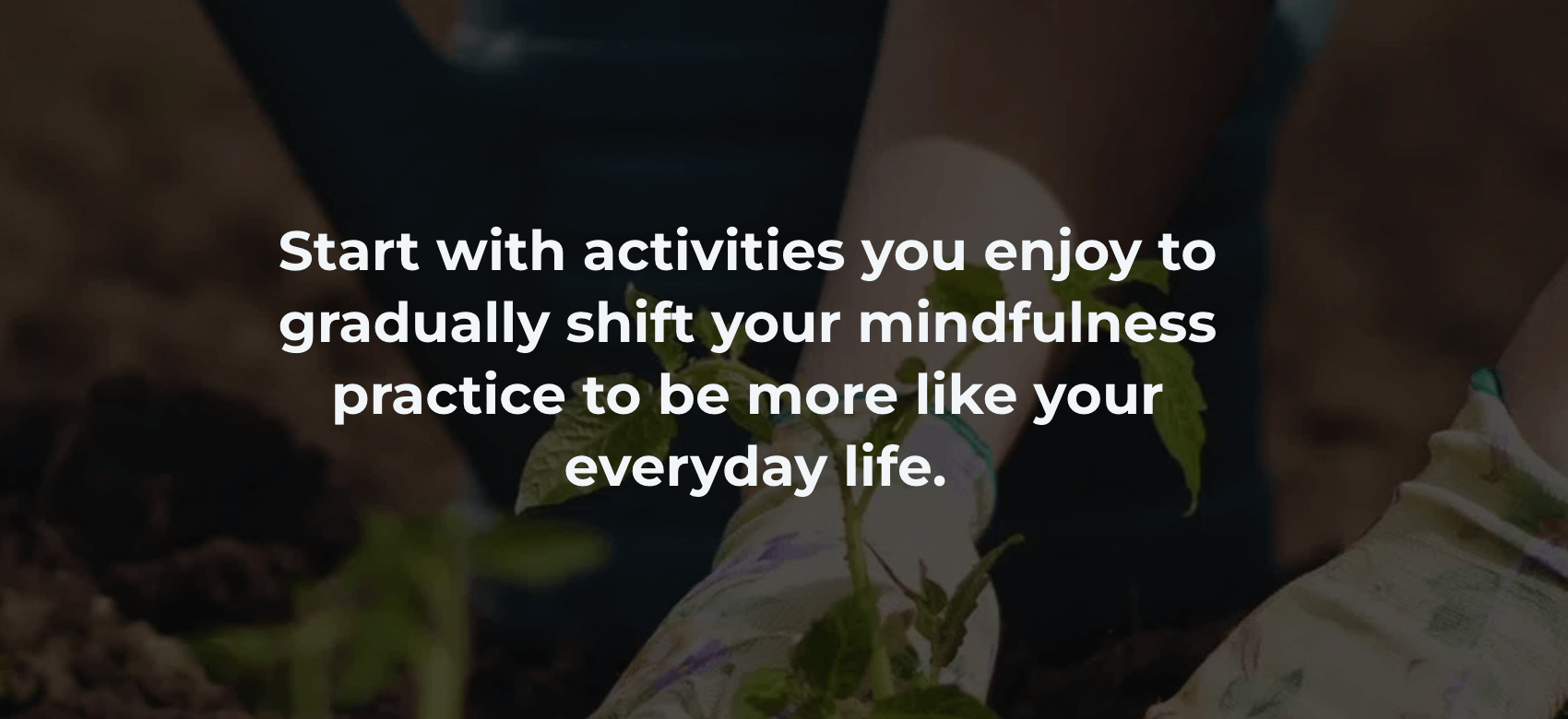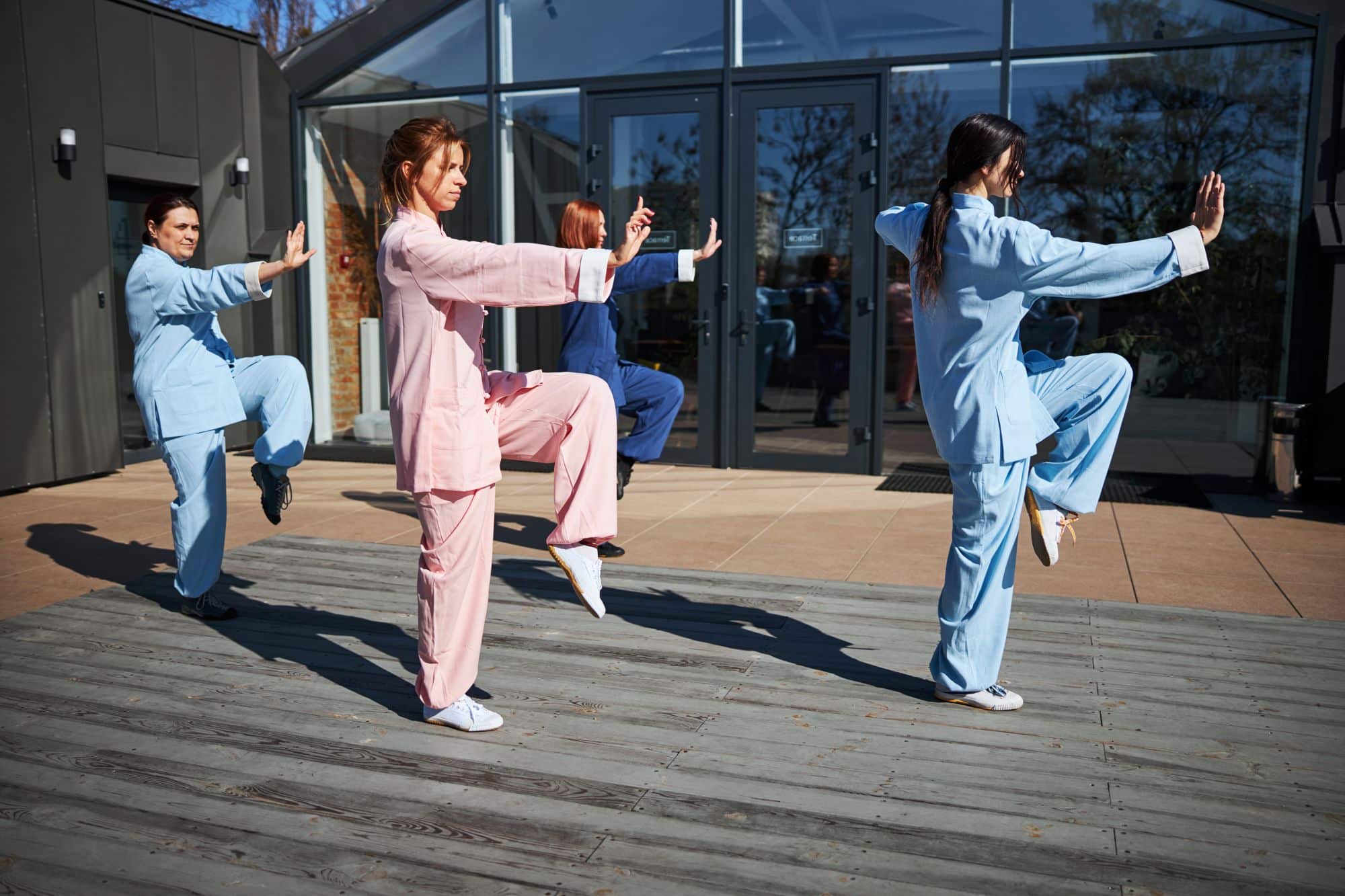Most of us who are interested in mindfulness practice are interested in enhancing our lives by bringing mindfulness into our everyday lives. For me, a mindfulness practice is distinguished from other activities by the intention to continuously maintain an alert and open mind or “a beginner’s mind”. This implies that anything could be a mindfulness practice with the right intention.
Meditation is the practice most associated with mindfulness. Meditation is typically practiced with minimal or no physical movement in a quiet, peaceful environment.
A quiet environment facilitates observing and quieting the mind. This quiet environment and minimal activity, however, is foreign to many of us living in the fast-paced modern world.
This foreignness is a barrier for some starting meditation. Even for long-term practitioners, the large discrepancies between the nature of our mindfulness practice and our everyday life make it difficult to bridge these two worlds.

Learning is Context Sensitive
In psychology, learning is described in terms of forming associations. When you study for a geography test from a book and memorize that Beijing is the capital of China, you form an association between “Beijing” and “capital of China”. More accurately, you are forming associations between all the stimuli appearing together in your environment at each moment.
You will tend to form stronger associations to those stimuli you are focused on or that are novel, interesting, or emotionally arousing. Unconsciously, however, you are forming associations to other stimuli as well. When you study, you are not only associating “Beijing” with “capital of China”, but also with the location of where the words appear on the page in your book, any sounds occurring in the background, any smells in the room, and any sensations in your body.
Learning, both knowledge and skill, is always context sensitive. We can access the learning most easily in an environment similar to the one where the learning occurred. Psychologists have found that students perform better on tests if they take the test in the same room in which they studied because their environment helps “prime” the correct responses.
In a famous experiment with somewhat counterintuitive results, a psychologist found that college students who studied for an exam while partially intoxicated performed better if partially intoxicated when taking the exam. The sensation of being intoxicated due to its association with studying in this experiment facilitated retrieval of the correct answers.
The contextual nature of learning suggests that the very features of meditation (i.e., quiet and stillness) which facilitate quieting the mind, at the same time, hinder bringing this mindfulness into everyday life where the environment is seldom quiet or still.
Solutions to Bridge the Gap
One possible solution to this dilemma would be to gradually shift the two environments (of practice and everyday life) to be more like each other. This could be done several ways. You could shift your everyday life to be more like your practice.
An extreme example of this would be to join a monastery or ashram. Some less extreme examples might be decluttering your apartment or leaving earlier for work to avoid the stress of rushing. Another approach would be to gradually shift your mindfulness practice to be more like your everyday life: meditating with increasingly loud traffic sounds in the background or sitting closer and closer to a picture of your infuriating boss.
The most effective approach might be to gradually work from both ends, making changes to both your everyday life and your practice to bring them into closer alignment, so the gap is more easily crossed. Many gradual changes from both ends could add up to a big difference over time.
Yoga
Some mindfulness practices are more active than meditation and, in this way, are more like everyday activities. These practices may aid transfer of mindfulness into everyday life and be more approachable for those put off by the stillness of meditation.
There are many styles of yoga which teach mindfulness with varying amounts of movement and exertion. Some styles of yoga intentionally introduce strenuous poses to provide an opportunity for students to explore how to remain relaxed and mindful while under stress and learning to find ease while exerting effort.
Typically, in yoga, students can modify the level of effort or ease in their practice to suit what is most beneficial for them in the moment. Unfortunately, everyday life does not always allow us to choose the stressfulness of our day (although often we fail to recognize the control we do have).

Aikido
Aikido is both a martial art and mindfulness practice. Aikido is practiced with a partner with whom one switches roles with between attacker (uke) and defender (nage). The attacker attacks the defender with a strike or grab and the defender defends with a throwing or pinning technique. Beginners start with attacks and techniques that are predetermined and performed slowly.
As one progresses, the practice becomes faster, more forceful, and more dynamic and unpredictable. The practice is intended to eventually become a continuous, mindful movement with no gaps or pauses to gather or settle oneself. One learns to settle oneself dynamically while moving, as everyday life often requires.

Aikido differs from meditation and yoga in the use of a partner. In aikido practice, one is attempting to be mindful not only of one’s own mind and body, but also of the mind and body of one’s partner. One is not able to completely suit the practice to one’s own needs but must find compromise with the needs of one’s partner. Partners vary in size, experience, temperament, gender, ability, and every other trait that humans vary on. Negotiating these differences can be wonderful, challenging, or overwhelming depending on the day, the partner, and one’s state of mind.
In aikido, one is repeatedly confronted with the experience of loving intentions being insufficient to result in loving practice, especially under duress. I understand from friends that parenthood shares this benefit. As a martial art concerned with human conflict, aikido allows us to see that aggression can arise in the body before we are conscious of it in the mind.
Peacefulness must be cultivated in the body, not just aspired to in the mind. It must be practiced, not just intended, if it is to enter everyday life. Negotiating (typically non-verbally) with a partner in aikido brings a familiar aspect from our everyday life into our mindfulness practice which may be helpful in bridging the gap.
Mindful Dance
Did you ever notice a young child dance or sing? They don’t care how they look or sound. They make up their own dance moves and words to the songs. They dance wildly and sing loudly.
They don’t worry about whether they’re “good” at dancing or singing. Maybe that was you. Maybe that still is you. But for many, somewhere in life, they got the message that they need to be good at something to do it. Only people with great voices can sing, and only those who move their bodies well can dance. So, they stopped singing and dancing.
They forgot that they deserve to move their body and let their voice be heard. They forgot that we are all singers and dancers. They forgot that we are all worthy of love and self-expression.
Dancing Mindfulness is a moving meditation practice that helps you remember your beautiful uniqueness and embody your worth and dignity. It connects your body, mind, and spirit using the power of music, movement, and awareness. There are no choreographed movements or dance steps to follow. You’re invited to come as you are and move as you wish which can be seated, standing, or reclined.
Dancing Mindfulness is for everyone regardless of your age, body type, fitness level, or experience with dance. Dr. Jamie Marich, the creator of Dancing Mindfulness, describes it best: “If you have a body, you can dance.” Dancing Mindfulness is a judgement-free zone to explore and play with your meditation practice. You’re encouraged to honor yourself and what you need as an expression of your worth. Maybe the music inspires you to sing, draw, write, or rest.
That’s OK because there’s no wrong way to do it. If you’re moving, you’re doing it right, and breathing is movement. It’s a liberating mindfulness practice.
Dance can help manage stress and improve overall wellbeing. It’s been used by native and indigenous cultures for centuries. It can release trauma stored in your body and take you to deep places of acceptance, healing, and recovery. Meditation practices, like Dancing Mindfulness, give you the gift of “kindful” awareness, the ability to listen and respond to the needs of your body, mind, and spirit with love and compassion.
They’re not about improving yourself but about accepting yourself as you are right now. They help you remember that you are a person of worth, and you have a right to be here, to express yourself, and to take up space.
Want more info about Dancing Mindfulness? Check out this short video.
Try What Feels Comfortable and Have Fun!
Aikido, yoga, and meditation vary on a continuum of activity. While the intense activity of aikido practice has the advantage of certain similarities to everyday life, the wider focus of mindfulness to include a partner makes it harder to observe some of the subtleties of the mind (which are perhaps more easily experienced in meditation) or of the mind-body connection (a strength of yoga).
The challenge then is to select from a palette of mindfulness practices (of which there are many beyond those mentioned here of which I am less familiar) and from a palette of life choices such that one’s practice and life gradually overlap more and more. One implication of this view is that one’s practice should not remain static. As one’s life changes, one’s practice should change to better reflect evolving needs.
Likewise, sometimes we may need to make life changes because of new insight gained from our practice. Slowly, slowly, we can weave the two together to bring mindfulness more effectively into our everyday life.
Awaken Can Help You Get Started
Awaken Pittsburgh offers mindfulness training for all skill levels, including beginners just like you.
Check out our free online mindfulness training resources
Join our online mindfulness community where you can find support and begin your mindfulness journey alongside like-minded people.
Mindful Connections™
Through our proprietary curriculum, Mindful Connections™, we offer essential, evidence-based mindfulness training designed to meet many needs—from individuals looking to deepen their practice, to educators, to public safety teams and others working in high-stress professions.
Led by experts in their fields and grounded in the latest findings in neuroscience and dialectical behavioral therapy, Mindful Connections™ programs are a proven path to powerful and lasting transformation.
Our introductory series is geared towards beginners, introducing a spectrum of practices that can benefit all levels. In addition, we offer programs specific to intermediate and advanced practitioners.



